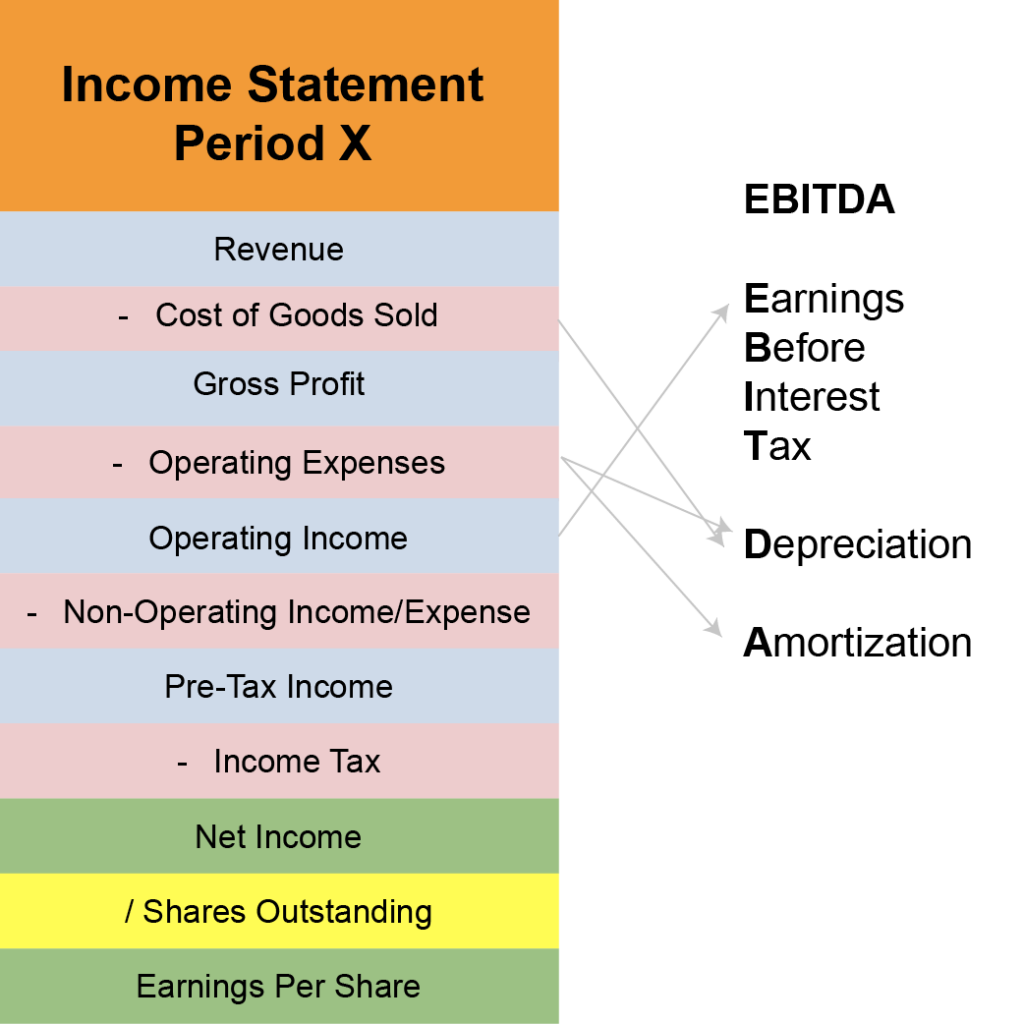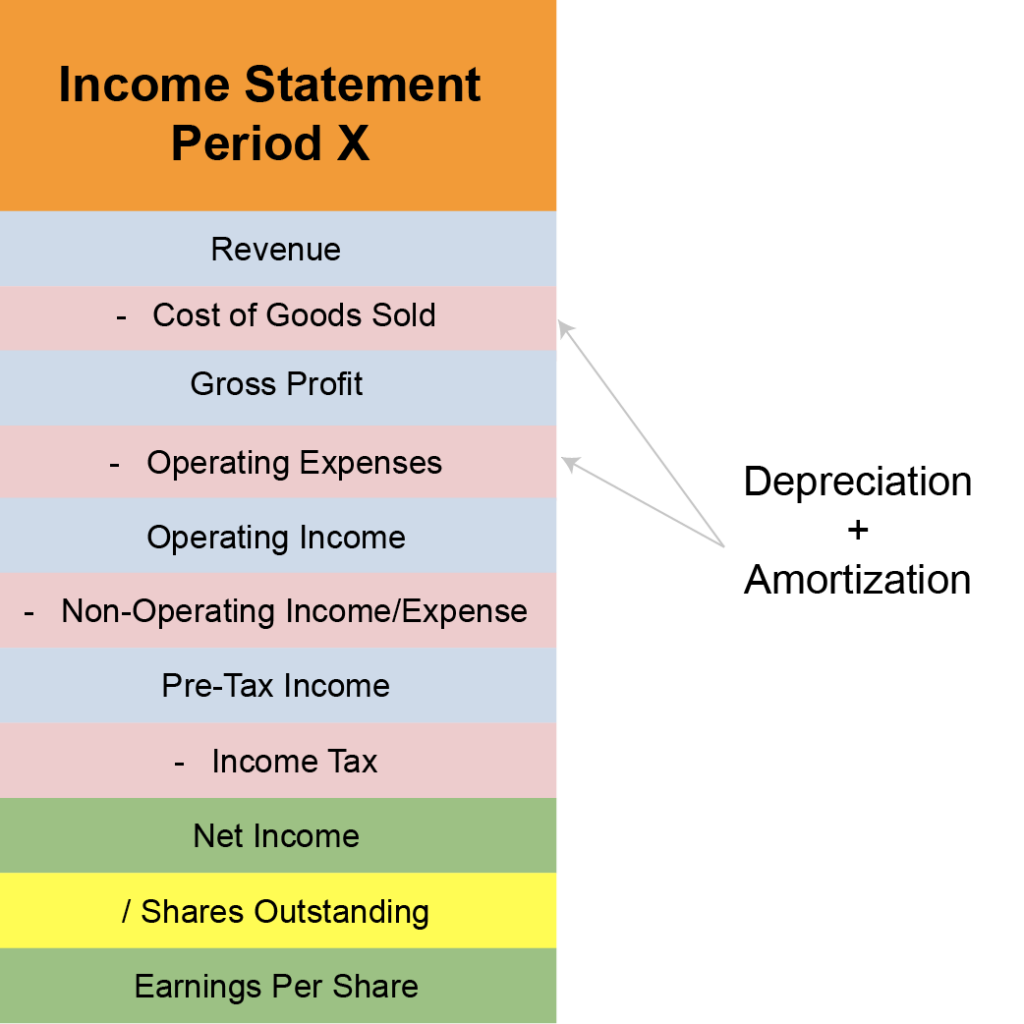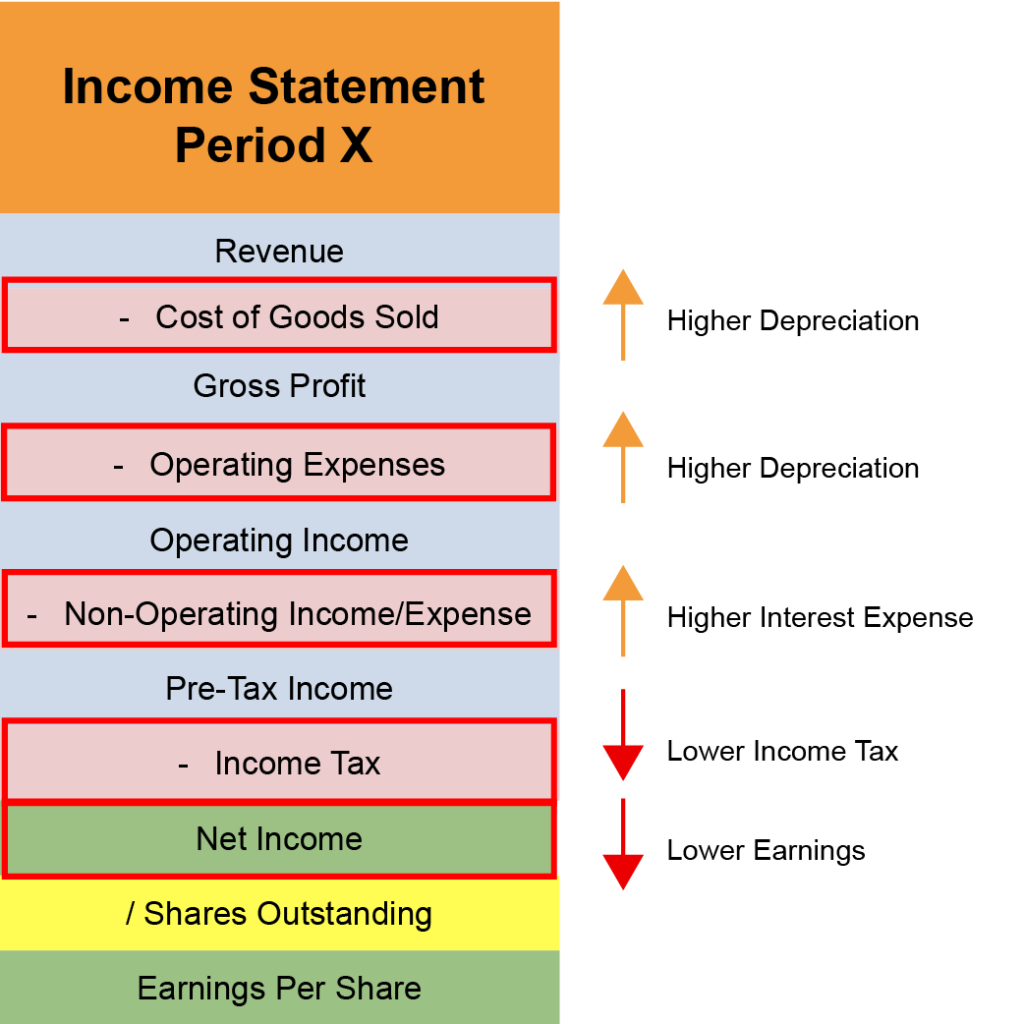Every marketer comes across the term “EBITDA” from time to time. When I was immersing myself in this topic, I decided to turn it this information into an article so everybody can understand it.
So… what is EBITDA?
EBITDA is a measure often used to analyse a company’s operational performance. It stands for Earnings Before Interest, Tax, Depreciation and Amortisation. Because it excludes interest, taxes, depreciation and amortisation, it can be seen as an indicator of a company’s operating cash flow potential. It is often used in valuation ratios and can help companies compare their operating performance with that of other companies within the same industry.
Calculation of EBITDA
The calculation of EBITDA can be done using the following formula:
EBITDA = Operating Income + Depreciation + Amortisation
To calculate EBITDA, you start with “EBIT”, or Earnings Before Interest & Tax. Then you add Depreciation and Amortisation.

“EBIT” or Earnings Before Interest & Tax are easy to understand. But what exactly do Depreciation and Amortisation mean?

Depreciation is the accounting term used to allocate the cost of an item of equipment over its useful life. Depreciation is how much of the value of the material good has been “used up” so far. So by material good I mean cars, inventory or buildings.
For example: you buy car for €36,000. 10 years later, you sell the car for €6,000. The value of the car depreciates €3,000 per year (€36,000 – €6,000 / 10 years = €3,000).
Amortisation is the accounting the value of a loan or intangible asset. It is similar to depreciation, but amortisation is done on intangible assets, which are assets you cannot physically touch (patents, trademarks, etc…)
Even though EBITDA is used a lot, EBITDA is not part of Generally Accepted Accounting Principles (GAAP). Because it is not a GAAP number, it is not usually reported by accountants. However, many managers do report on EBITDA.
Why measure EBITDA?
EBITDA was made famous by John Malone. Malone became a billionaire by buying and operating cable companies. Malone liked to use his debt to grow and hated paying taxes. He used interest and depreciation to reduce his tax bill. Using EBITDA lowered his company’s net profit.
Lower net profit is often a problem for investors and lenders. Therefore, Malone convinced them to focus on cash flow rather than net profit.

While EBITDA is a valuable measure, it also has its limitations. Excluding interest, taxes, depreciation and amortisation can distort a company’s true financial performance. For example, EBITDA ignores the impact of taxes, which can be a significant cost for a company. Therefore, it is important to always evaluate EBITDA in combination with other financial measures and contextual information.
In summary, EBITDA is a financial measure used to measure a company’s operational performance, profitability and financial health. It provides investors, analysts and financial professionals with valuable insight into a company’s core business by excluding cost factors not directly related to operational performance. Although EBITDA has its limitations, it remains a very useful tool for analysing companies and making investment decisions.


